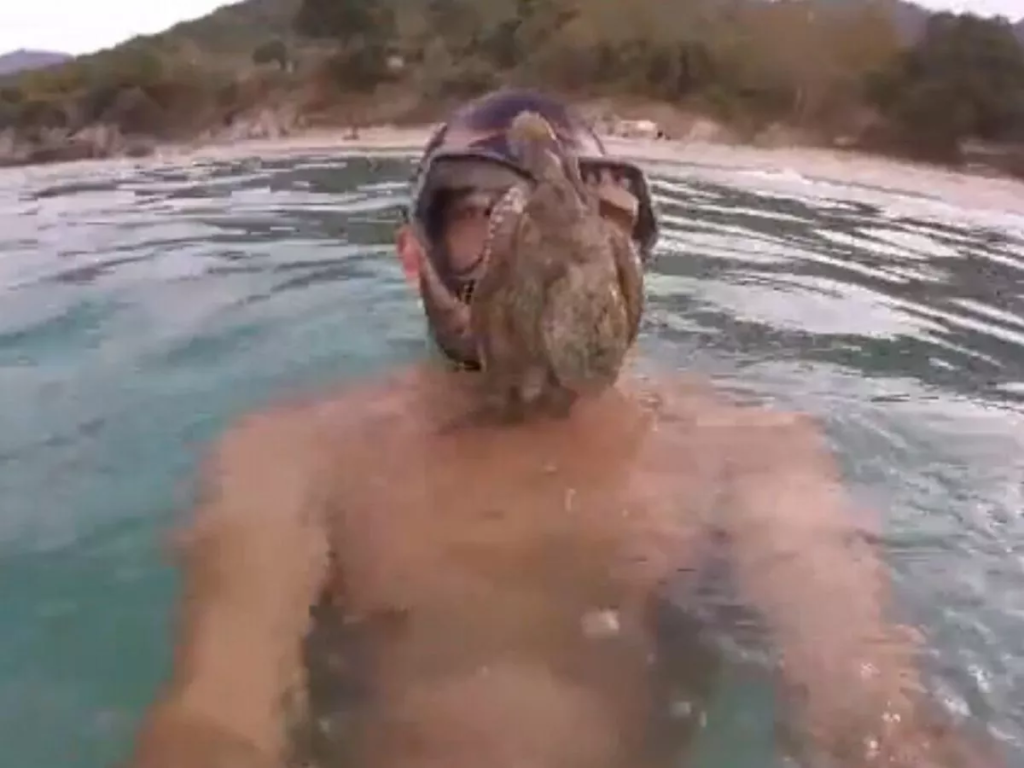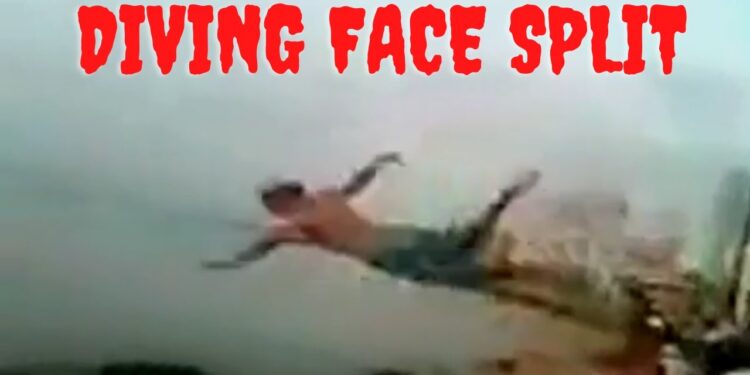Introduction
The alluring blue of the ocean holds mysteries that have been the subject of fascination and fear for centuries. Among the many aquatic adventures, cliff diving stands out as a thrilling but dangerous pursuit sought after by adrenaline junkies who crave the rush of leaping into the abyss. However, this pursuit of thrill can come at a high price. The term “split face diving accident paints a grim picture, one that encapsulates the dire consequences that can ensue when a dive goes wrong.
The Allure and Warning of Cliff Diving
Cliff diving, in its essence, is the embodiment of human audacity – the act of jumping off a high cliff into water. It’s a sport that marries the beauty of natural landscapes with the thrill of free fall. To many, it represents the ultimate communion with nature, a leap of faith that thrills the spirit. However, it’s a sport that demands respect for the elements and strict adherence to safety protocols. The split-face diving accident is a stark reminder of what can go wrong.
The Harrowing Tale of a Dive Gone Wrong
The narrative of a split-face diving accident is not for the faint of heart. It often begins with a vibrant individual, full of life, standing atop a precipice overlooking the crystalline waters below. The leap, a seemingly simple act of athleticism, quickly devolves into a nightmare when a mistimed jump or an unforeseen gust of wind alters the diver’s trajectory. The water’s surface, akin to concrete at high velocities, becomes an unforgiving barrier.

Medical Insights on Facial Trauma
The medical community views split-face diving accidents as a serious concern due to the complex nature of facial injuries. The face is not just the seat of identity but a network of bone, muscle, and nerves that requires the utmost care in surgical reconstruction. Survivors of such accidents face a long road to recovery, often undergoing multiple surgeries and enduring physical and emotional scars. The path to rehabilitation is not solely physical.
Safety Measures and Preventive Strategies
Preventing split-face diving accidents is paramount. This involves stringent safety measures and public education about the risks associated with cliff diving. Would-be divers should undertake extensive training, learn to assess their environment carefully, and never dive alone. Local authorities and diving communities can help by setting up designated diving spots with clear safety guidelines and providing on-site supervision to prevent unauthorized jumps.
Advocacy and Aftercare: The Role of Community
The role of the diving community and healthcare providers extends beyond the prevention of accidents. There’s a crucial need for advocacy and aftercare for individuals who have suffered from split-face diving accidents. This includes support groups, counseling, and helping survivors reintegrate into society. The community can be instrumental in providing a supportive network that encourages resilience and aids in the mental health recovery of those who have experienced these traumatic events.
The Ethical Dilemma of High-Risk Sports
The existence of high-risk sports like cliff diving opens a Pandora’s box of ethical considerations. On one hand, the spirit of adventure and the pursuit of personal limits are intrinsic to human nature. On the other, society must grapple with the costs associated with rescue operations, medical care, and the long-term implications for survivors of split-face diving accidents.
The Future of Cliff Diving
Looking forward, the future of cliff diving could be shaped by technological advances and increased regulatory measures. Innovations in safety equipment, real-time environmental monitoring systems, and enhanced training methods could significantly reduce the incidence of accidents. Moreover, governing bodies may implement more rigorous certification processes for divers and potentially restrict diving to specific safe locations.
Understanding the Mechanics of Diving Impact
The physics behind a split-face diving accident are as straightforward as unforgiving. When a diver leaps from a cliff, gravity accelerates their descent, increasing their velocity until they strike the water. Water, though seemingly soft and yielding, acts like a solid when hit with enough force. A diver’s face, meeting the water’s surface at high velocity, can experience an impact similar to hitting concrete.

First Responders and Emergency Protocols
The critical moments following a split-face diving accident are a race against time. First responders play a vital role in delivering immediate care to minimize the long-term consequences of the injury. Emergency protocols dictate a swift response, with the primary focus on ensuring the airway is clear, controlling any bleeding, and stabilizing the victim’s neck to prevent spinal injury.
The Psychological Impact of Traumatic Injuries
Traumatic injuries extend beyond the physical realm, profoundly affecting the mental health of the victims. The sudden change in appearance and the painful recovery process can lead to depression, anxiety, and post-traumatic stress disorder (PTSD). Survivors of split-face diving accidents may grapple with the loss of identity and fear of social stigma as they recover from their visible injuries.
Legal and Insurance Considerations
Legal and insurance issues can complicate the aftermath of a split-face diving accident. Victims may face significant medical bills and long-term care costs, and the question of liability often arises. Was the accident the result of negligence, and if so, who is responsible? Legal experts need to navigate local regulations regarding adventure sports, premises liability, and personal injury law.
Reconstructive Advances and Hope for Recovery
Advancements in reconstructive surgery have brought hope to victims of severe facial trauma. Cutting-edge techniques and technologies, such as 3D printing and tissue engineering, revolutionize how surgeons approach facial reconstruction. Custom implants, bone grafts, and microvascular surgery allow for the rebuilding of facial structures with increasing precision and aesthetic outcomes.

Prevention as the Paramount Goal
Ultimately, the primary goal in addressing the risks of cliff diving is accident prevention. Education is the first step, informing potential divers of the dangers and teaching them proper techniques and safety measures. Regulatory bodies and cliff-diving organizations can help by enforcing strict guidelines and creating safe, designated diving sites.
Conclusion
The split-face diving accident serves as a sobering lesson that adventure sports, while thrilling, carry inherent risks that must be acknowledged and mitigated. The tale of the Abyssal Scar is an exemplary narrative that emphasizes the importance of respect for the natural world and the need for preparation and caution.
Also, Read The Following: 1v1.LOL Unblocked











Discussion about this post